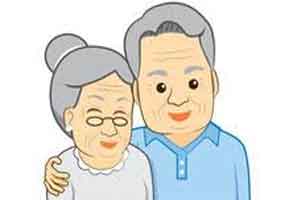- Home
- Editorial
- News
- Practice Guidelines
- Anesthesiology Guidelines
- Cancer Guidelines
- Cardiac Sciences Guidelines
- Critical Care Guidelines
- Dentistry Guidelines
- Dermatology Guidelines
- Diabetes and Endo Guidelines
- Diagnostics Guidelines
- ENT Guidelines
- Featured Practice Guidelines
- Gastroenterology Guidelines
- Geriatrics Guidelines
- Medicine Guidelines
- Nephrology Guidelines
- Neurosciences Guidelines
- Obs and Gynae Guidelines
- Ophthalmology Guidelines
- Orthopaedics Guidelines
- Paediatrics Guidelines
- Psychiatry Guidelines
- Pulmonology Guidelines
- Radiology Guidelines
- Surgery Guidelines
- Urology Guidelines
Dynamic exercises better than resistance exercises for healthy ageing

According to a new study, Dynamic exercises such as walking or cycling help one age healthier than resistance exercises such as strength training. The researchers from Germany have discovered evidence that endurance exercise, such as running, swimming, cross-country skiing and cycling, will help one age better than resistance exercise, which involves strength training with weights. The study was published in the European Heart Journal.
Endurance training, high-intensity interval Training (IT), and Resistance Training protocols induce specific cellular pathways in circulating leucocytes. Endurance training and IT, but not RT, increased telomerase activity and telomere length which are important for cellular senescence, regenerative capacity, and thus, healthy ageing.
In a similar study published in the journal Ageing Cell, Medical Dialogues has reported that staying active keeps the body young and healthy and loss of muscle mass and strength did not occur in those who exercised regularly.
Read Also: Ageing can be slowed down by regular exercise
The chromosomes of the human body contain DNA and at the end of each DNA is a repetitive DNA sequence called telomere that caps the chromosome and protects its ends from deteriorating. Ageing leads to shortening of the telomeres and is no longer able to protect the chromosomal DNA. The process of telomere shortening is regulated by several proteins. Among them is the enzyme telomerase that is able to counteract the shortening process and can even add length to the telomeres.
Ulrich Laufs and his associates conducted a prospective training study to examine the effects of endurance training, interval training (IT), and resistance training (RT) on telomerase activity and telomere length (TL).
The study included 266 young, healthy but previously inactive volunteers and randomized them to six months of endurance training (continuous running), high intensity interval training (warm-up, followed by four bouts of high intensity running alternating with slower running, and then a final cool down of slower running), resistance training (circuit training on eight machines, including back extension, crunch, pulldown, seated rowing, seated leg curl and extension, seated chest press and lying leg press), or to an unchanged lifestyle (the control group).
The participants who were randomized to the three forms of exercise undertook three 45-minutes sessions a week, and a total of 124 completed the study. The researchers analyzed telomere length and telomerase activity in white blood cells in blood taken from the volunteers at the start of the study, and two to seven days after the final bout of exercise six months later.
Read Also: Big breakthrough in combating ageing by Gujarat Ayurved university
The study found that compared to the start of the study and the control group, in volunteers who did endurance and high-intensity training, telomerase activity and telomere length increased, which are both important for cellular ageing, regenerative capacity and thus, healthy ageing. However, resistance training did not exert these effects.
Telomerase activity was increased two- to three-fold and telomere length was increased significantly in the endurance and high-intensity training groups compared to the resistance and control groups.
"The study identifies a mechanism by which endurance training - but not resistance training - improves healthy ageing. It may help to design future studies on this important topic by using telomere length as an indicator of 'biological age' in future intervention studies," said Prof Laufs.
For full information log on to https://doi.org/10.1093/eurheartj/ehy585

Disclaimer: This site is primarily intended for healthcare professionals. Any content/information on this website does not replace the advice of medical and/or health professionals and should not be construed as medical/diagnostic advice/endorsement or prescription. Use of this site is subject to our terms of use, privacy policy, advertisement policy. © 2020 Minerva Medical Treatment Pvt Ltd